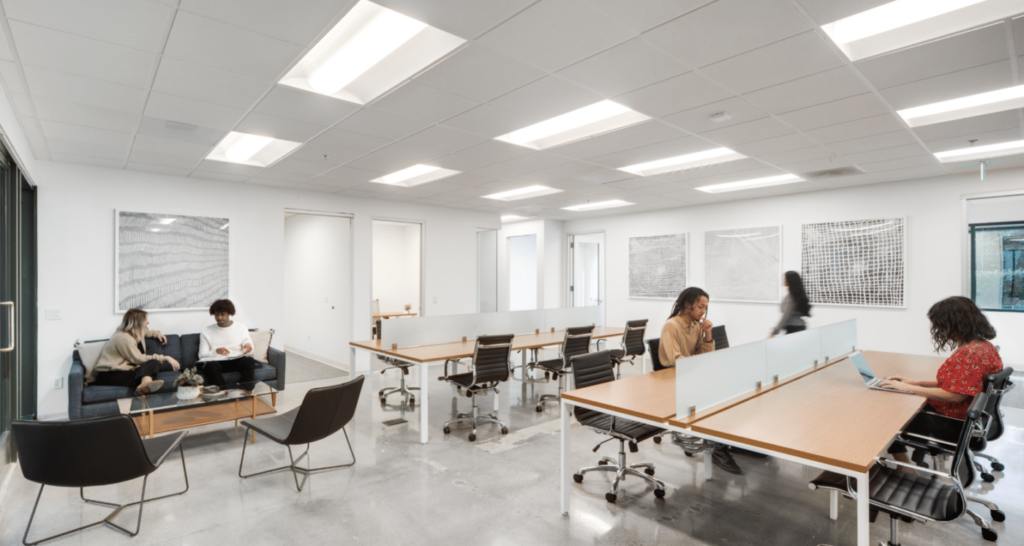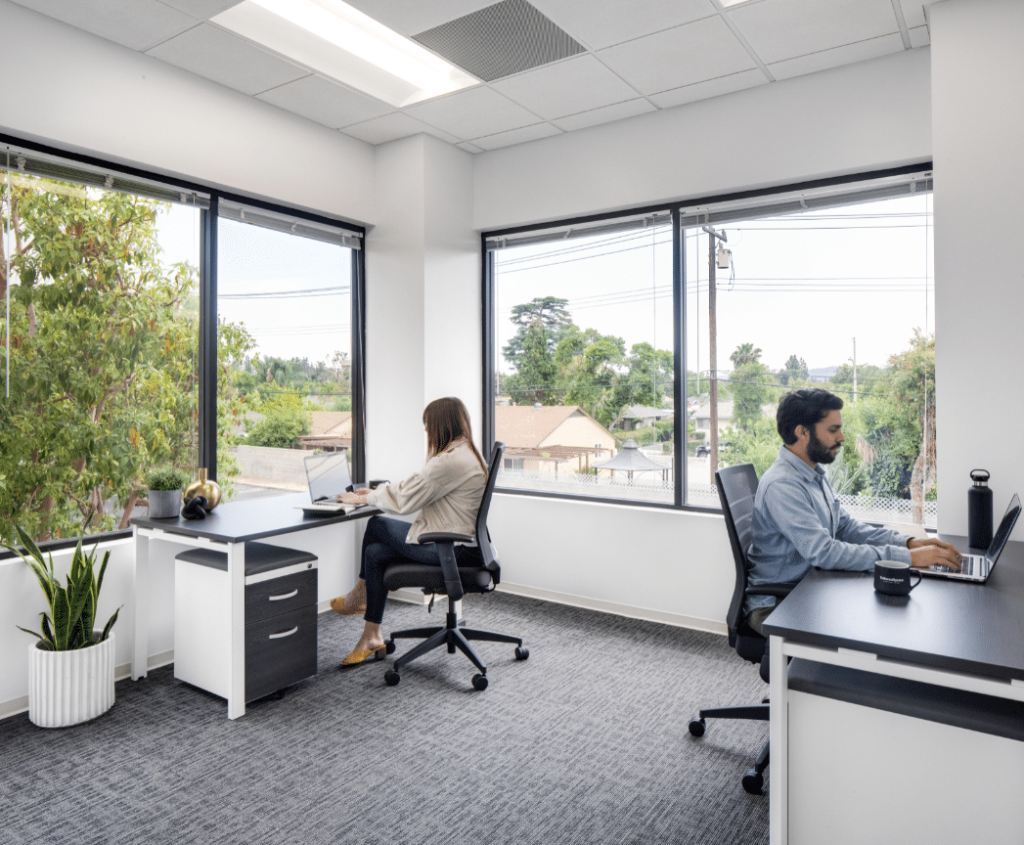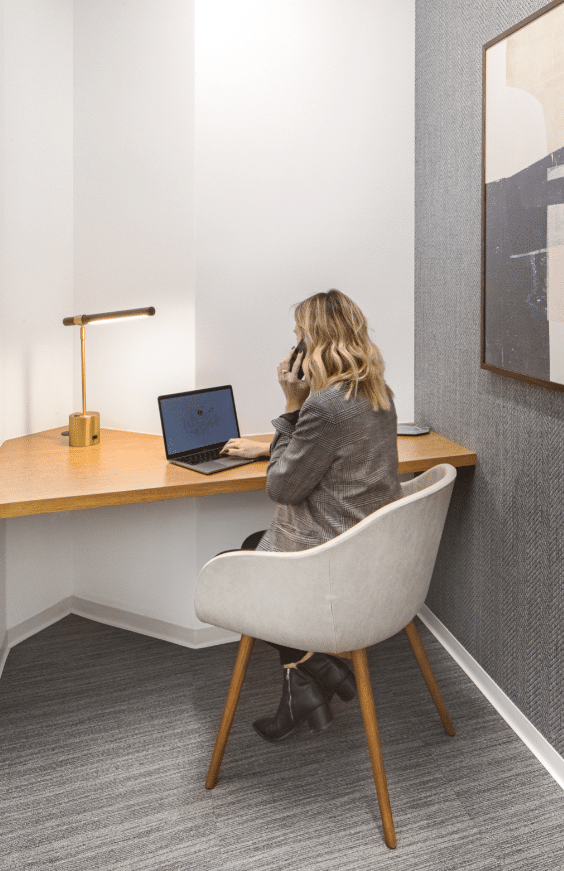The way we work is continuously evolving. The recent Coronavirus pandemic, for example, has forced many organizations to adopt remote working policies for an indefinite period. The changing landscape of where work is done though isn’t limited to catastrophic events like CoVID-19.
Many companies have shifted from the traditional office structure to adopting workspace arrangements such as co-working spaces, shared workspaces, and shared offices. At TailoredSpace, our mission is to accommodate this new generation of business professionals in the best way possible. Each of these comes with its advantages and drawbacks, let’s explore these new ways of working below:
What is Coworking?
When one thinks of Coworking spaces, one typically thinks of startups and freelancers. These spaces are most often used as an alternative workspace option to coffee shops or working from home. A good definition of a coworking space is one where the basic amenities related to carrying out work as an individual contributor exist. For instance, this can be a space shared by many unrelated individuals each having access to a dedicated or shared desk.
Related: What is Coworking? The Ultimate Guide
What is a Shared Workspace?
A shared workspace is often interchangeably used with coworking space. However, a good delineation is to think of shared workspaces as areas that are more formally structured the way that an office is structured. This space will go beyond offering basic workspace items such as a desk and a chair. It will often include meeting rooms, print rooms, a cafeteria, and other amenities. It will even house dedicated areas that can be reserved for entire teams or companies.

Coworking vs Shared Workspaces vs Shared Offices
Coworking and shared workspaces can be thought of as a more no-frills, feature-rich version of open workspaces that anyone can join. The third option to these spaces is known as shared offices. Shared offices can be thought of as business centers or communities. This is where, for example, a business may house various floors of offices, and specific rooms are rented out by individual companies. These shared offices are smaller in nature and come with a more isolated floor plan. Let’s explore the benefits of each below:
Coworking
A coworking space provides some unique benefits:
- Community. One of the biggest benefits of coworking spaces is the inherent focus on developing a strong community. Since many patrons are not part of larger teams, they seek coworking spaces to find a sense of community and their own office family. Because of this, you’ll commonly find coworking spaces throwing unique mixers, events, and learning sessions to foster networking and collaboration.
- Flexible desk arrangements. Coworking spaces have a large open floor plan and this means there are options to work in various arrangements such as on the couch, on a desk, or in the cafeteria. Not all desk space is reserved and this allows people to jump around and switch things up as needed.
- Coworking spaces in the early days were also catered to creative freelancers. Because of this unique history, these spaces usually offer brainstorming rooms and whiteboarding spaces.
Shared Workspace

A shared workspace also provides some unique benefits:
- Access to premium meeting rooms. Meeting rooms with the latest bells and whistles are usually found in shared workspaces. These would be very expensive if one had tried buying it for themselves.
- Business mailing services. Most shared workspaces will allow users to have mail forwarded to the workspace after which it’s routed to their rented desk space.
- Cafeteria and free snacks/beverages. A dedicated cafeteria/kitchenette serving lunch alongside free coffee and snacks is available in most shared workspaces for users.
- Phone and nap nooks. Recently, shared workspaces have also begun to offer specific nooks and rooms for users to take a short nap or a phone call.
Shared Office Space
Shared office space provides some unique benefits as well:
- Fewer distractions. Shared office space is more insular and this means one is not going to find a steady stream of foot traffic and conversations around them. This is opposed to working with a more open floor plan.
- Proximity to similar businesses. Shared office spaces tend to be clustered around other businesses in the same industry. Most shared office buildings go by a theme such as Technology or Banking. This can be advantageous as one will be near others working in the same field, and this can foster healthy competition and innovation.
- Formal business services. Whether it’s access to dedicated phone lines and mailboxes, shared office spaces provide formal accommodations any business operation needs to thrive.
- TailoredSpace Suites. Our private Suites are custom built & furnished within 24-hours with the use of moveable walls! Our Suites are ideal for companies seeking identity & flexibility while maintaining a connection to a larger community. We can accommodate teams of any size.

The Benefits of All
- Affordability is key. Compared to taking out dedicated office space leases, these spaces typically will charge depending on the number of users and usually require monthly commitments. This makes them much cheaper and affordable as one is not committed to signing a multi-year office space lease. Also, as an organization’s size changes, billing is adjusted to fit that new size.
- Flexibility is one of the biggest advantages to any of these workspace options compared to a traditional office. As a company workforce grows, all three types of workspaces offer the ability to scale up occupancy. Similarly, if a team needs to quickly change office location, it’s easier to temporarily set up in a new location through one of these shared workspace arrangements instead of opening up a new office.
- Collaboration both within teams and between teams can be better in these workspaces as they are designed with more open floor plans in mind.
- Because these spaces involve teams and individuals that are not from the same organization, it can become a great place to network with other professionals. It can foster new business and professional relationships.
Related: 15 Tips to Increase Office Productivity
Four Examples of Shared Workspaces

Physical & Collaborative:
These are spaces that encourage collaboration by having floor plans that ensure everyone works closely together and offer the ability to brainstorm with whiteboards and other tools. The TailoredSpace campuses include tastefully designed and fully furnished communal spaces. From kitchens to couches, we understand that sometimes the best business happens outside the office. We provide comfortable zones to rest, connect & ultimately get the most out of your workday.
Physical & Shared:
These spaces are designed to be the most flexible in terms of usage. This means there are no dedicated desks and space is designed so that maximum occupancy can occur throughout the day. They are designed to cater to any type of worker.TailoredSpace Offices are fully furnished and move-in ready. They are available in 1-Person, 2-Person, 3-Person & 4-Person sizes. Offices are ideal for businesses seeking a dedicated & private work space within a larger communal environment. TailorSpace Offices accommodate teams from 1 to 25.

Don’t like what you see? Check out TailoredSpace for more Shared Workspaces built just for you!
Virtual & Collaborative:
Shared workspaces can also be virtual and collaborative for when employees are distributed across a city or region. An example of this is through the use of video conferencing and digital whiteboards.
Virtual & Shared:
Virtual and Shared workspaces are also digital-only but the emphasis isn’t on collaboration and on sharing information. Examples of this could be using cloud file-sharing systems such as Google Drive, digital kanban tools such as Trello, or Google Sheets.
Related: How to Make the Ultimate Collaborative Workspace
Conclusion

One of many shared office spaces from TailoredSpace
The world certainly is changing, and for businesses to get ahead they need to change with it. Shared Workspaces, like Coworking Spaces, are signals of that change. We at TailoredSpace have been at the forefront of that change, so we have all of the required accommodations for an ever-shifting workforce. By explaining to you the differences inherent between a Shared Workspace and a Coworking Space, we hope that it encourages you to give this type of work environment a shot. Feel free to reach out to us today for an appointment, we’ll be waiting.